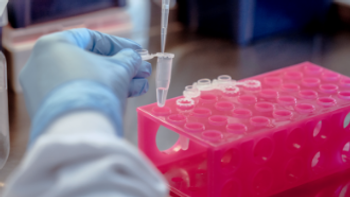
- BioPharm International-04-01-2019
- Volume 32
- Issue 4
Reinventing the Biomanufacturing Wheel
To achieve further cost reductions in biosimilar manufacturing, a move away from traditional models is necessary.
It is well known that numerous branded biologics are facing patent expiration before 2020, which is expected to lead to a continued increase in the numbers of biosimilars in development. As has been reported, European growth within the biosimilars market is accelerating rapidly while in other regions, such as the United States, progress has been slow (1), which has been attributed to regulatory frameworks (2) and a growing acceptance in Europe of biosimilars’ interchangeability with innovator drugs.
Cost represents an important aspect of the biosimilar sector. The biological copies of patented therapies can potentially offer patients a much more affordable treatment avenue, however, despite the positive cost impact that was anticipated to be brought on by biosimilars, there is increasing pressure on the market to be more competitive and offer further discounts on prices (1).
Belgian technology innovation company, Univercells, has taken the mission of making biologics affordable and available to all. The execution of this mission is critical in low- and middle-income countries (LMICs) where the current supply of these molecules is reliant on importation. “The advent of biosimilars was estimated to have a positive impact on accessibility by reducing selling prices by 30–40%,” explains Tania Pereira Chilima, product manager at Univercells. “Yet, more significant price reductions are still required in order to ensure that these molecules are accessible to all of those in need. Hence, in order to reduce selling prices while maintaining high margins, cost-of-goods (CoG) reductions through process optimization are required.”
Thinking outside the biomanufacturing box
“The traditional manufacturing model for biologics relies on economies of scale to achieve cost-effectiveness,” Pereira Chilima says. “This model requires very large and expensive facilities producing tonnes of product yearly.”
However, for niche disease areas, the benefits of economies of scale are minimized as the annual throughput is reduced and hence the impact of capital investment is magnified, increasing the overall CoG, she explains. “Additional cost pressure points include labor costs and quality assurance costs, which do not necessarily decrease with scale, and hence become significant as a proportional of the total CoG when considering the low processing volumes required for niche diseases,” she adds.
A potential strategy to reduce CoG in biomanufacturing is the implelentation of ‘smart facilities’. “Smart facilities can provide platform processes for cost-effective and low footprint manufacture of biologics with low capital investment requirement,” Pereira Chilima notes. The Nevoline offered by Univercells is an example of a smart facility. This ‘smart facility’ features a low footprint fixed-bed bioreactor with high surface area per unit volume, which operates in a perfusion mode in order to achieve high cell densities. Moreover, chaining principles were employed so as to enable an integrated and continuous upstream and downstream processing.
A need to move away from the classical model
“We need to reinvent the way we think about biologics manufacturing and move from the classical centralized stainless-steel facility model into innovative facility concepts, which allow for cost-effectiveness to be achieved even at the smaller scales characteristic of niche disease areas,” emphasizes Pereira Chilima. “Such facility concepts can be achieved through the implementation of manufacturing platforms that adopt the principles of chaining and intensification previously applied in the chemical engineering industry, in order to reduce footprint and capital investment. Moreover, coupling these principles with automation will further decrease the CoG through labor cost reductions.”
Through additional projects, Pereira Chilima notes that Univercells is looking to develop and deploy complete turnkey solutions that will enable low-cost and low-capital investment manufacture of biosimilars in LMICs. “These solutions will include the transfer of biological material, equipment, processes protocols, clinical documentation among other items” she says. “Moreover, the tech transfer activities and training of a local workforce will enable partners to build a strong knowledge base and be rapidly autonomous for the sustainable production of affordable biotherapeutics.”
“Global health is everyone’s responsibility as it is key for a good quality of life,” Pereira Chilima concludes, “This is even more crucial when it comes to immunization. When it comes to these vaccine products, our technology can ensure adequate availability to the population irrespective of geographic location.”
References
1. Y. Chen et al., “
2. A. Harston, “
Article Details
BioPharm International
Vol. 32, No. 4
April 2019
Pages: 22–23
Citation
When referring to this article, please cite it as F. Thomas, “Reinventing the Biomanufacturing Wheel," BioPharm International 32 (4) 2019.
Articles in this issue
over 6 years ago
Cleaning Chromatography Resin Residues from Surfacesover 6 years ago
Channeling Customer Complaints into Qualityover 6 years ago
Continuous Manufacturing Gains Major Push from FDAover 6 years ago
Continuous Bioprocessing of Vaccinesover 6 years ago
Going Global in Biopharma Regulatory Affairsover 6 years ago
Predictability Improves Prospects for Biopharma Patent Holdersover 6 years ago
What’s New in Downstream Processingover 6 years ago
Science Focus Fuels Successful Process Development for StartupsNewsletter
Stay at the forefront of biopharmaceutical innovation—subscribe to BioPharm International for expert insights on drug development, manufacturing, compliance, and more.





